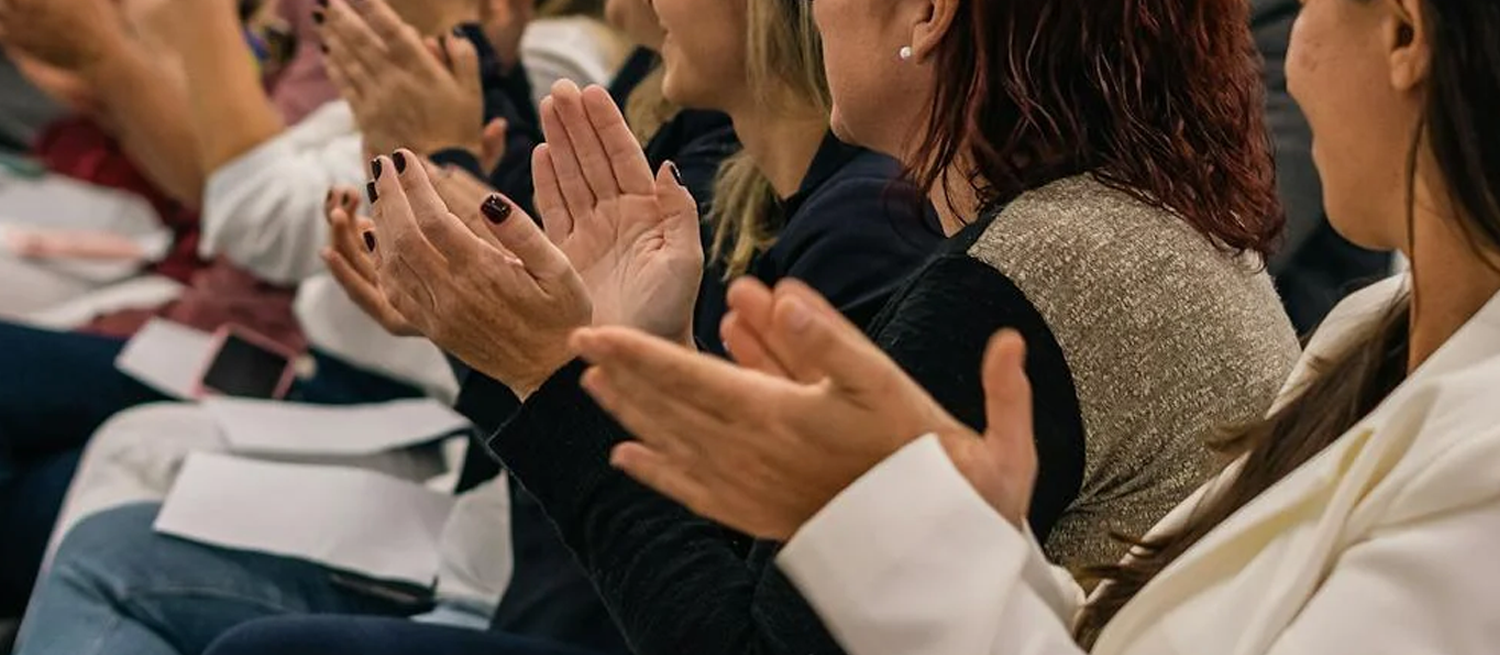A few Sundays back, our beloved soprano Ellen McAteer sang the Lord’s Prayer with a ferocity I’ve rarely heard. This was at our 11 am traditional service, mind you. When she finished, we applauded. I wasn’t surprised. We applaud often at our 9:15 contemporary service. And Ellen’s version was celestial.
One might object that applause isn’t the best response to a prayer. “This is not a performance,” one might object. In fact, several did. It is not common for us to applaud at a traditional service. A pregnant silence might be the best congregational response to a prayer.
But then, this past Easter, there was applause again. More than once. When Rev. Lori told us of her sabbatical, there was applause. She has earned a respite and we were glad to say so. When the choir smashed one of their songs, there was, again, applause. More temperate this time than after McAteer’s solo. Being Easter, we had lots of folks present who are not always. They might not know that we don’t normally applaud at 11. I did not hear the reverb this time (“this is not a performance”).
There are ecclesial traditions in which applause is encouraged, or even expected. These can create their own problems. If there is no applause, we might be asked to clap. Or make ourselves clap even if we don’t feel like it. Some in contemporary worship circles used to coach that approach.
In most Anglo-Saxon churches we don’t applaud. We don’t say “amen.” We don’t raise hands. We barely move. The range of bodily responses to God’s movement in worship is incredibly narrow: the raised eyebrow, the slight, wry smile, the barest of nods. And just here we may be missing out on some of the glories of Christian worship. When God comes among us in Christ, we might sing and dance like Miriam and the women by the side of the split Red Sea. We might speak with ecstatic utterance in languages we never learned, miraculously delivered by the Holy Spirit. We might make music with tambourine, lyre, and harp—making such a ruckus the trees join in clapping their hands. Scripture presents worship as a noisy affair.
It might surprise you to know that we didn’t even have pews in worship until the Reformation. We remade churches into school classrooms, with a teacher up front, and us students sitting still. Our Orthodox brethren don’t sit in worship unless they are ill. Otherwise, they move around, light candles, reverence icons and kiss them, greet one another. Our Catholic and Anglican siblings kneel, stand, cross themselves, genuflect, and turn worship into aerobic exercise. Talal Asad, a secular Muslim, describes secularism as “untutored bodies.” Someone without faith doesn’t know what to do with their body in the presence of God. Worship is how we learn what to do with our bodies in God’s presence.
So is applause something we should do in worship?
I confess I don’t have the reflexive abhorrence for applause I hear from some of you. I joined in after Ellen’s solo. It wasn’t for her. It was a communal reaction to the beauty we’d just been immersed in. Applause is a clumsy common response in a way. We don’t have other communal resources that some churches do—raising hands, kneeling, and so on. We have applause. So perhaps we should use it. In any event, I don’t want to shame those who do respond. “It is not a performance,” true enough, but what we do in worship is also not not a performance either. There are performative aspects to worship that all singers and speakers and readers have to be aware of. My own instincts, as you can tell, are to prefer a wider range of embodied responses to worship. If applause is borderline acceptable, tongues are less so. So occasionally we’ll go with the clapping.
A man attending Bishop William Barber’s church in eastern North Carolina stood and did a backflip once during worship. He apologized after: ‘Bishop Barber, I’m sorry, I just couldn’t help myself from doing a backflip.’ I mean, sometimes the Holy Spirit gets a hold of you...




